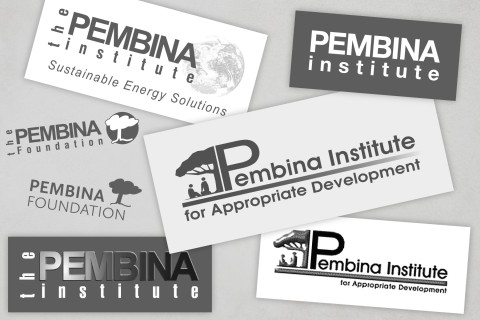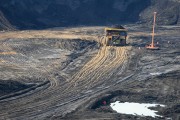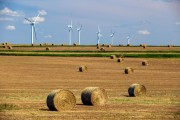Today, the U.S. National Transportation Safety Board found Alberta-based Enbridge had poorly maintained a section of pipeline that ultimately spilled 20,000 barrels (nearly 3.2 million litres) of diluted bitumen from Alberta’s oilsands into the Kalamazoo River in Michigan in 2010. While Enbridge claims to be a recognized “industry leader in pipeline safety and integrity,” it turns out that Enbridge may not have been following the law.
The U.S. Pipeline and Hazardous Materials Safety Administration (PHMSA) just last week proposed that Enbridge receive the largest fine in that agency’s history, $US 3.7 million, for a list of 22 probable violations. According to PHMSA, Enbridge did not start any emergency measures until 17 hours after the rupture, despite multiple alarms occurring immediately after the pipeline ruptured. Even with a fully functioning leak detection system, it was not the Edmonton control centre of Enbridge but rather a local natural gas company who reported the leak to authorities.
To add salt to the wound, this morning the U.S. National Transportation Safety Board (NTSB) released a highly critical report revealing that Enbridge had known about the problematic section of pipe since 2005, but had misdiagnosed the problem and neglected to repair that section. They slammed Enbridge, saying there was “too little focus on safety and too little follow up on known risk,” and that Enbridge’s response to the spill was “completely ineffective.” This brings into question why Enbridge chose to not fix this problem, why their spill detection and response systems were wholly inadequate and why the government allowed such risky behaviour to endanger local residents and the environment.
 Alberta is no stranger to pipeline spills either. In 2010 there were approximately 640 reportable pipeline incidents, according to the province’s energy regulator, the Energy Resources Conservation Board (ERCB), which manages nearly 400,000 kilometres of pipelines in Alberta. In May and June of this year there were three major spills in Alberta that caught national media attention: Enbridge’s Elk Point spill of 1,400 barrels of oil, Plains Midstream’s Red Deer River spill of 3,000 barrels of oil, and a 5,000 barrels of oil by Pace Oil and Gas near Rainbow Lake. Further, Alberta’s Department of Energy recently reported that the ERCB’s inspections found an 83 per cent jump in “high risk” violations in 2011, roughly one-third of which involved pipelines. Fortunately most pipelines continued to function normally last year, but this jump is certainly cause for concern.
Alberta is no stranger to pipeline spills either. In 2010 there were approximately 640 reportable pipeline incidents, according to the province’s energy regulator, the Energy Resources Conservation Board (ERCB), which manages nearly 400,000 kilometres of pipelines in Alberta. In May and June of this year there were three major spills in Alberta that caught national media attention: Enbridge’s Elk Point spill of 1,400 barrels of oil, Plains Midstream’s Red Deer River spill of 3,000 barrels of oil, and a 5,000 barrels of oil by Pace Oil and Gas near Rainbow Lake. Further, Alberta’s Department of Energy recently reported that the ERCB’s inspections found an 83 per cent jump in “high risk” violations in 2011, roughly one-third of which involved pipelines. Fortunately most pipelines continued to function normally last year, but this jump is certainly cause for concern.
While the risks of pipeline spills are part of the business of moving hydrocarbons to market, there are ways that risks can be minimized through technology and regulation. From time to time, governments conduct reviews or audits of their pipeline management system. These reviews help to provide a foundation of evidence upon which to ground future management decisions.
Just this year, Saskatchewan conducted an audit of their pipeline network and the ability of their provincial government to monitor and regulate the network. The Saskatchewan auditor general found that the province’s energy regulator did not have effective ways to assess compliance with key pipeline safety legislation and regulation. They noted that failure to regulate pipelines could harm both residents and the environment, and issued a list of recommendations.
The federal government’s own environmental watchdog, the Commissioner on Environment and Sustainable Development, recently reached a similarly concerning conclusion regarding federally-regulated pipelines. The December 2011 report found that Transport Canada and the National Energy Board (NEB), the two federal agencies that oversee federally-regulated pipelines in Canada, did not adequately follow up on instances of non-compliance when pipelines companies were told by those agencies to improve the safety of their pipelines. The environment commissioner also criticized these agencies for not properly reviewing emergency procedures manuals for pipelines, as they are required to do under federal law. Transport Canada and the NEB agreed to all of the recommendations advanced by the federal environment commissioner in this report.
The Saskatchewan and federal government audits, along with the PHMSA and NTSB investigations on Enbridge’s Kalamazoo River spill, have clearly shown that more can be done to minimize the risks to the public and the environment.
Over the past few weeks an increasing number of Albertans have been calling on the provincial government for action. A diverse array of organizations including land rights groups, environmental groups, First Nations and organized labour are asking Alberta Premier Alison Redford to implement a comprehensive pipeline safety review.
When we at Pembina dug into the pipeline legislation, we found that the Province actually has a clear mandate to conduct a pipeline review. Section 4 of Alberta’s Pipeline Act (R.S.A 2000), states that the ERCB can “inquire into, examine and investigate any matter relating to:
(a) the economic, orderly and efficient development in the public interest of pipeline facilities in Alberta;
(b) the observance of safe and efficient practices in the construction, operation, discontinuation and abandonment of pipelines;
(c) the observance of safe and efficient methods in any work, operations or activities when a ground disturbance in a controlled area is being undertaken;
(d) the control of pollution and conservation of the environment in the development, operation, discontinuation and abandonment of pipeline facilities.”
For such a review, independence — freedom from undue government or industry influence — will be critical for its credibility. The ERCB, for example, has consistently maintained (even during the recent pipeline spills in Alberta) that its pipeline management systems are adequate, even though it has not been able to provide Albertans with evidence to support this claim.
Given the recent boom in pipeline construction in Western Canada, regulators across the region are playing catch-up to properly manage the growing and aging stock of pipeline infrastructure. Meanwhile, pipelines, which have historically flown under the radar of most Canadians, are now front and centre in the news. Between the increasing coverage of pipeline spills and the mounting public concerns around pipelines to the west and east coasts of Canada, there is a need to have the full suite of facts in front of government decision makers and the public alike. The Pembina Institute is not alone in our frustration in the lack of publicly-accessible data on pipeline performance in Alberta — journalists also share concerns over transparency. Any sort of review would need to consider the accountability of both pipeline operators and regulators to the public.
Albertans need to know that their regulators and pipeline companies are following the law and seeking to continually improve safety performance. An independent review of pipeline safety and the adequacy of regulatory monitoring and oversight is clearly overdue.










